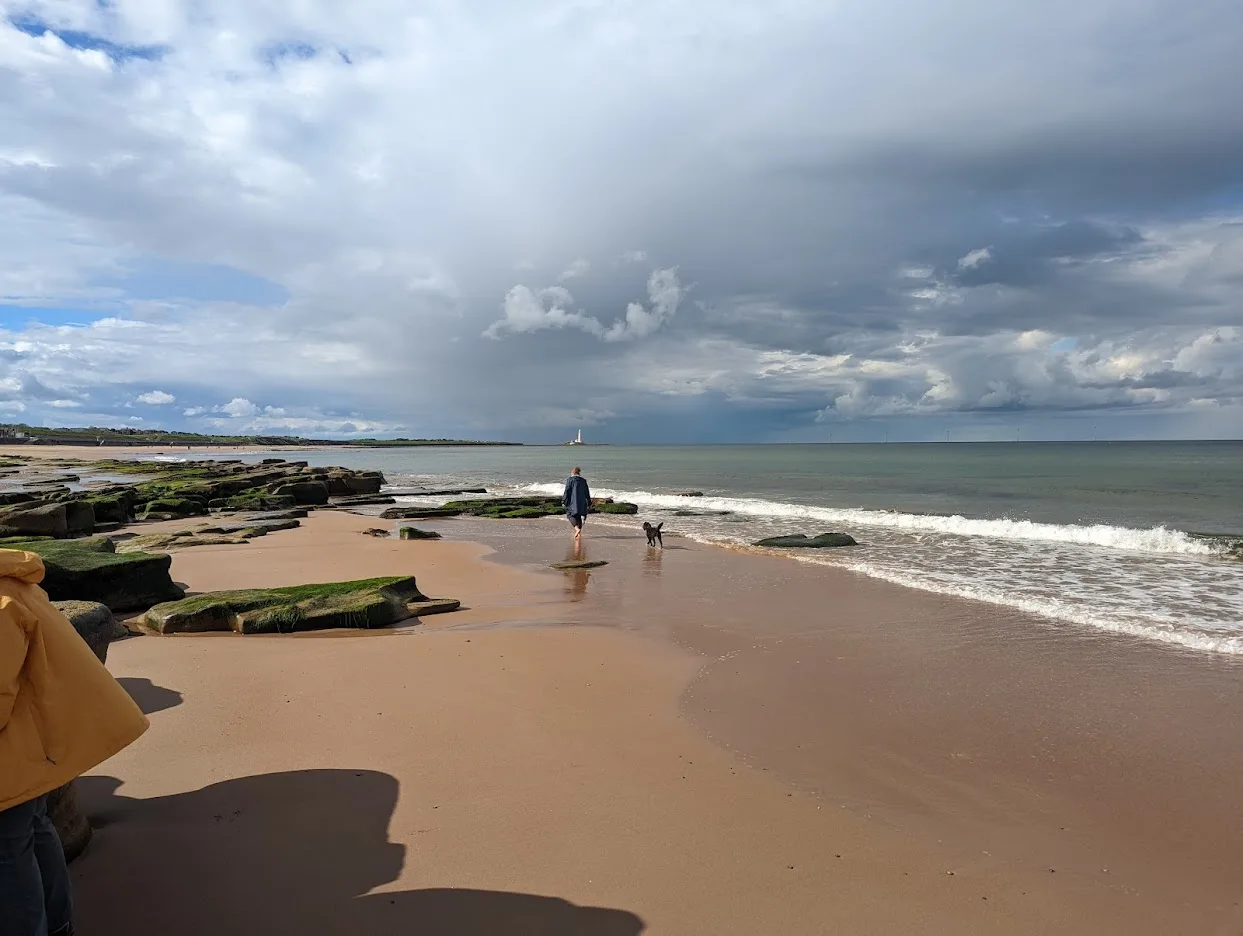I dipped my feet in the North Sea. It rained. I ate an ice cream. There was a dog. How much more British can you get?
 |
| Dipping my toes in the North Sea, with the requisite British dog. Her name is Poppy and she's a gem. |
Last week, I wrote here and here that nothing lasts forever. In Britain, is sometimes turned on its head; antiquity seems to pop up everywhere.
The Moray Estate was built in the early 19th century on a steep slope above the Water of Leith. Ownership is by feu, a feudal land tenure system peculiar to Scotland. The freeholder is somehow a vassal to the mesne lord, in this case the Earl of Moray. This is all pretty vestigial at this point, but it seems to confer some rights, including the beautiful gardens of the Moray Estate.
 |
| Portrait of Dr. Martha Vail Barker, 2019, Carol L. Douglas. |
I came to Scotland in 2019 to paint a portrait in one of these townhouses, located on Great Stuart Street. In the end it became as much a portrait of the rooms as of the subject. I’d heard the townhouse had sustained serious flooding last year, but the scale of the damage shocked me. There is nothing left of the rooms but the radiators, the fireplace and the wooden shutters. The ornate plaster ceiling friezes have been restored; but the floors are gone completely. The ground floor has been restored, with just a few fiddly bits left to finish, but the first floor is uninhabitable. Nothing lasts forever.
The Moray Estate was built to house Edinburgh’s rich and famous, but the only one that truly interests me is the Scottish Colourist, Francis Cadell, whose family home was at 22 Ainslie Place. Cadell used that interior in many of his paintings, so I play Peeping Tom whenever I walk by.
 |
| Interior, The Orange Blind, c. 1914, Francil Cadell |
My goal for this trip is actually England, not Edinburgh. Yesterday, we traveled by train to Newcastle-upon-Tyne. The East Lothian landscape would serve up a lifetime of painting in itself. Quietly rolling, impossibly green, dotted with sheep and cattle, it lies along the North Sea. Unlike America, every inch of shoreline has not been coopted by the rich.
We spent the afternoon dutifully touring the Roman ruins of Segedunum. There are only so many clay pots and bronze brooches I can take, but the cavalry barracks were touching. Each man lived back-to-back with his horse in adjoining rooms and stalls. How do they know this? On one side of the wall were the remains of cooking hearths. On the other, horse piss and manure.
 |
| The Spanish City in its heyday. |
The seaside holiday resort of Whitley Bay is dominated by the Spanish City, a pleasure hall that opened in 1910. It once included a concert hall, ballroom, funfair, restaurant, tea room and roof garden, but all are closed. Now there’s a gift shop, a restaurant, and a wedding venue.
I ate an ice cream on the lido and dipped my toes in the North Sea. It rained. In short; it was a perfect English holiday.
Today we start our walk in earnest—11.5 miles through Tyneside. We’ve been promised that this is the most boring part of the walk, as we’re essentially crossing the city. The upside, as I reminded my partners in this venture, is that we can lunch in a pub, and that will include a half pint of Newcastle Brown Ale.

